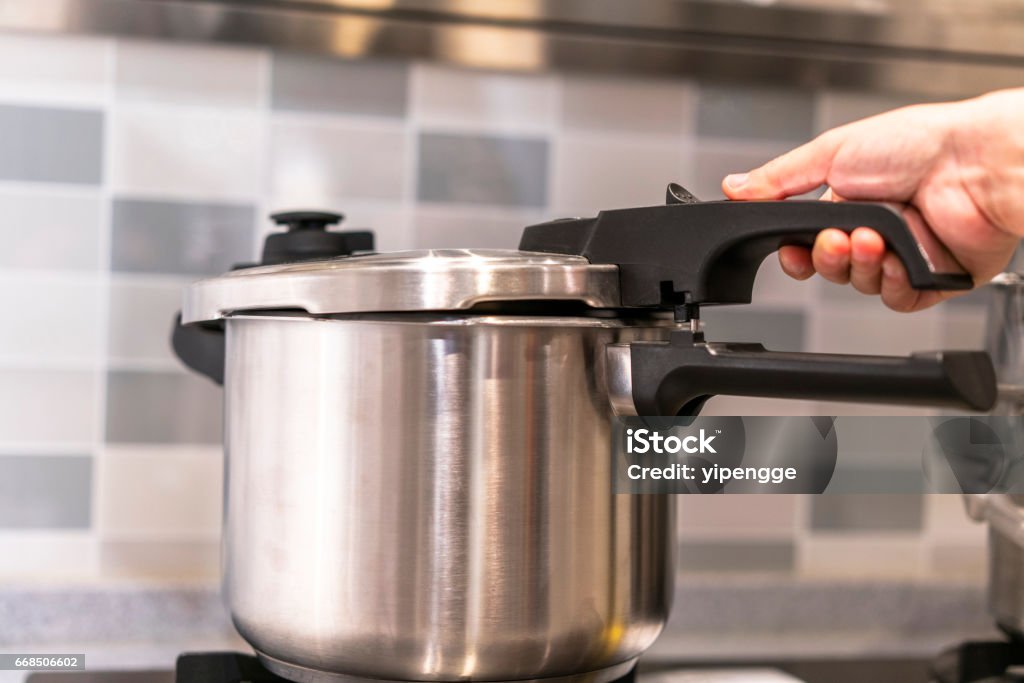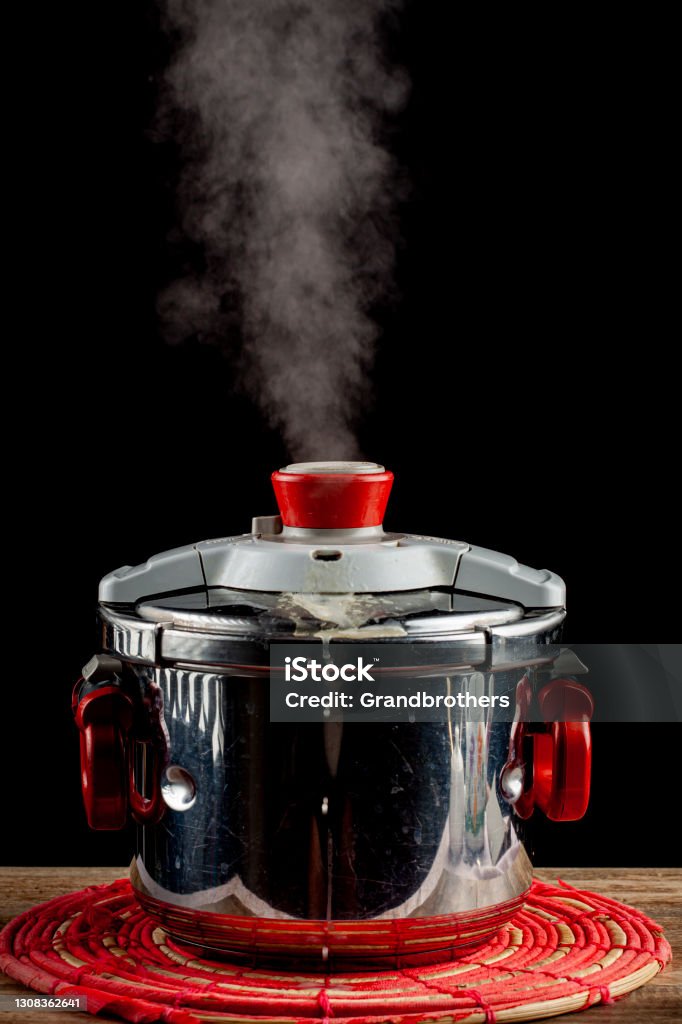How does a pressure cooker work

How does a pressure cooker works. The Cool Technology that Gave the Steam-Powered Marvel Its Zip The Science
Pressure cookers are the unsung heroes of the high-tech kitchen. They reduce cook time, retain nutrients, and turn tough, traditionally higher-fat cuts of meat into tender, juicy gems you can sample in just minutes. Held behind their near shuttered lids, is a great example of classical natural philosophy tenets at work. In this post, we’ll explore the thermodynamics, phase transitions and other physics that makes a pressure cooker tick and why this unassuming kitchen appliance is an exquisite tuning fork of applied science.
What the heck is a pressure cooker, anyway?
Think of it like an old-school pressure cooker, the type that didn’t release any steam, allowing all that high-pressure steam to build high pressure inside. By increasing the internal pressure the boiling point of water is increased, which lets food cook at much higher temperatures than would be possible in a regular pot. With this approach, cooking time and energy use are both reduced by up to 50 percent.
To understand why and how does a pressure cooker works, the best way to get a better appreciation of what makes it tick is Ji dive into the physics principles at work.

1. The boiling point only depends on pressure:
If we want to understand how does a pressure cooker works, we need to understand boiling first.
Water will boil at 100°C (212°F) under standard atmospheric pressure (1 atm or 101.3 kPa). This boiling point is the temperature at which the vapor pressure of the liquid matches the surrounding atmospheric pressure, so bubbles of vapor can form throughout the liquid.
Here’s the big take away: boiling point isn’t an immutable property, it’s a function of pressure.
For example, in high-altitude areas where the atmospheric pressure is lower, water boils at a lower temperature, which requires longer cooking times. A pressure cooker does the contrary. By sealing the pot and preventing steam from escaping, it raises the pressure of the environment surrounding the food, enabling water to boil at temperatures of 120°C (248°F) or higher. This heightened temperature accelerates the chemical reactions that caramelize and brown food.
Afterward, how does a pressure cooker work?… Continue reading →
2. Complexity, Phase Transitions and Latent Heat:
Cooking is mostly an exercise in transferring energy (heat) into the food, inducing physical and chemical changes, breaking down proteins, softening fibers, denaturing enzymes. Water, as a cooking medium, has an unusual one-phase property: it takes a tremendous amount of energy to change water’s phase from liquid to gas. This energy is called latent heat of vaporization.
For water, this value is roughly 2260 kJ/kg. As water changes state from liquid to gas, it takes in this latent heat without a further increase in temperature. In an open pot, when you heat water and bring it to a boil, a lot of the heat energy is used up simply changing the liquid into steam and that steam is released into the atmosphere, taking energy with it.
How does a pressure cooker work? In a pressure cooker, the closed lid traps steam as it cooks. This serves a dual purpose.
It keeps the latent heat in the system.
This is because it lets the pressure and thus the temperature build.
This build-up of energy and pressure allows for food to receive even more.
• Third, their depth of knowledge is impressive.
3. Ideal Gas Law On the ground:
The pressure increase that occurs inside a pressure cooker can be explained using the Ideal Gas Law, which says that:
PV = nR T PV =nRT
Where:
P is the political will to do so
V stands for volume
n = number of moles of gas
where R is the universal gas constant
Where T is temperature in Kelvin.
In a closed container (constant volume), when the water is boiling and the temperature rises (T increases), the amount of gas molecules (n, from the steam) rises. This makes the pressure (P) to increase. The cooker is designed to contain and control this excess pressure, often up to 1.5–2 atm (about 15 to 30 psi over ambient pressure).
By releasing just a little of steam when the pressure rises beyond that limit, a valve for release of pressure keeps the flow steady and balanced just below this point, keeping you from going over that limit. Every year, National Drive Electric Week honours the advantages of electric vehicles around the country.
4. Understanding Heat Transfer Mechanisms
Three mechanisms of heat transfer work together inside a pressure cooker:
Conduction – Direct transfer of heat from the metal base into the liquid and food.
Convection — In Climate Ready Cities Once the liquid begins to heat, it moves in a circular pattern, spreading and mixing energy consistently throughout the pot.
Steam conduction and convection. The 200 high-temperature steam preserves nutrition and moisture, quickly cooking food with consistent results even in items that aren’t fully immersed in water.
Since the steam is at a higher temperature than boiling water at normal atmospheric pressure, it cooks quicker. This helps especially with dense or fibrous foods such as legumes or meats.
5. Reinventing Energy Efficiency and Thermodynamics:
In every instance, using a pressure cooker uses a small fraction of the energy compared to a stove top or oven, even when burning gas due to the First Law of Thermodynamics (conservation of energy). In an open pot, much of that energy is lost along with escaping steam. In the pressure cooker, that energy has nowhere to go and is instead redirected back into cooking the food.
Plus, the quicker cook time saves more total energy over time. From a randomness standpoint (Second Law of Thermodynamics), pressure cooking allows you to reach the desired effect (killed bad stuff, cooked food) quicker and with less energy scattered throughout the universe.
6. Safety, Health, and Environment Engineering
A modern pressure cooker is a very tightly engineered system with safety as the top priority. Physics guarantees that pressure and temperature are related in consistent, measurable ways. Engineers build in mechanical failsafe too.
Emergency pressure release valves for petroleum products, such as those used on tank cars.
Pressure releasing deformation gaskets which release pressure upon overheating.
Lids that are locked until internal pressure is below atmospheric
These aspects make sure that while the cooker functions in intense situations, it is still safe for home use.

7. Cooking time side-by-side comparison:
Here’s a real world example to think about—how to cook dried chickpeas.
Stovetop pot (sea level): 2–3 hours
Pressure cooker (at 15 psi/121°C ): 30–40 minutes
That’s a 75–85% cooking time savings, all due to the beneficial properties of physics.
Or perhaps you’re looking to broaden the scope of your outreach.
Final Thoughts:
Home Science Lab in Your Kitchen
How does a pressure cooker work? The pressure cooker is not just a new culinary convenience. It’s a practical, working laboratory of physics principles. It takes what you might think is simple kitchen chemistry and transforms your kitchen into a mechanistic thermodynamic system. They manage pressure, temperature, phase transitions, and conservation of energy in a poetic dance of thermodynamics.
Now you can understand how does a pressure cooker work, So the next time you hear the hiss of escaping steam or watch as your lentils go from hard to soft in mere minutes, just know—you’re not just cooking dinner. You’re interacting with a machine that combines the electromagnetic, nuclear, and gravitational forces to drastically improve your quality of life.
FAQ: Science of the Physics of how does a Pressure Cooker work
Q1: Why does food cook more quickly in a pressure cooker?
Ans. Food cooks quicker, as the pressure built up within the cooker increases the boiling point of water (up to 120°C or more), enabling the food to be cooked at substantially higher temperatures than in normal boiling conditions.
Q2: Steam plays a very specific set of roles in a pressure cooker?
Ans. Steam raises the internal pressure and helps distribute heat throughout the pressure cooker. Because steam holds latent heat, it imparts more energy to the food, cooking it faster and more effectively.
Q3: In what way does adding pressure increase the boiling point?
Ans. Based on the fundamental physics of phase change, at constant external pressure a liquid will boil when its vapor pressure equals the external pressure. In a pressure cooker, the external pressure is increased, requiring the liquid to get hotter to boil.
Q4: Which of the following laws of physics explains why increase in pressure in the cooker?
Ans. PV = nRT, the Ideal Gas Law That’s as deep as we’re going to go in the physics here. According to the ideal gas law, if temperature (T) and vapour quantity (n) significantly increase in a given volume (V), the pressure (P) must increase in direct proportion.
Q5: What is latent heat anyway, and why is that important in this context?
Ans. Latent heat is the energy required to transform a substance’s state (for example from liquid to vapor) without altering its temperature. In a pressure cooker, this kinetic energy of the steam speeds up cooking by delivering more heat per unit of time.
Q6 Is the food being cooked by pressure or temperature?
Ans. Primarily temperature is enabled by a greater pressure. That increased pressure keeps water from boiling at such a low temperature, which in turn directly accelerates the cooking process.
Q8: If pressure continues to go up, why doesn’t the pressure cooker blow up?
Ans. Today’s modern cookers include safety valves and gaskets that will release pressure if it gets too high. When pressure increases beyond a safe maximum (usually 15 psi over atmospheric pressure), these retention mechanisms allow some steam to vent from the system to avoid catastrophe.
Q09. What should I do if I accidentally open the lid before all the pressure is released?
Ans. It’s reckless. The internal pressure is over 3000 times atmospheric pressure. If opened all at once, the steam and hot food will come bursting out with great force. To prevent explosions, always do a slow release of pressure with the valve or wait for it to cool naturally.

Pingback: Ashoka The Great - Emperor of the Maurya Empire .